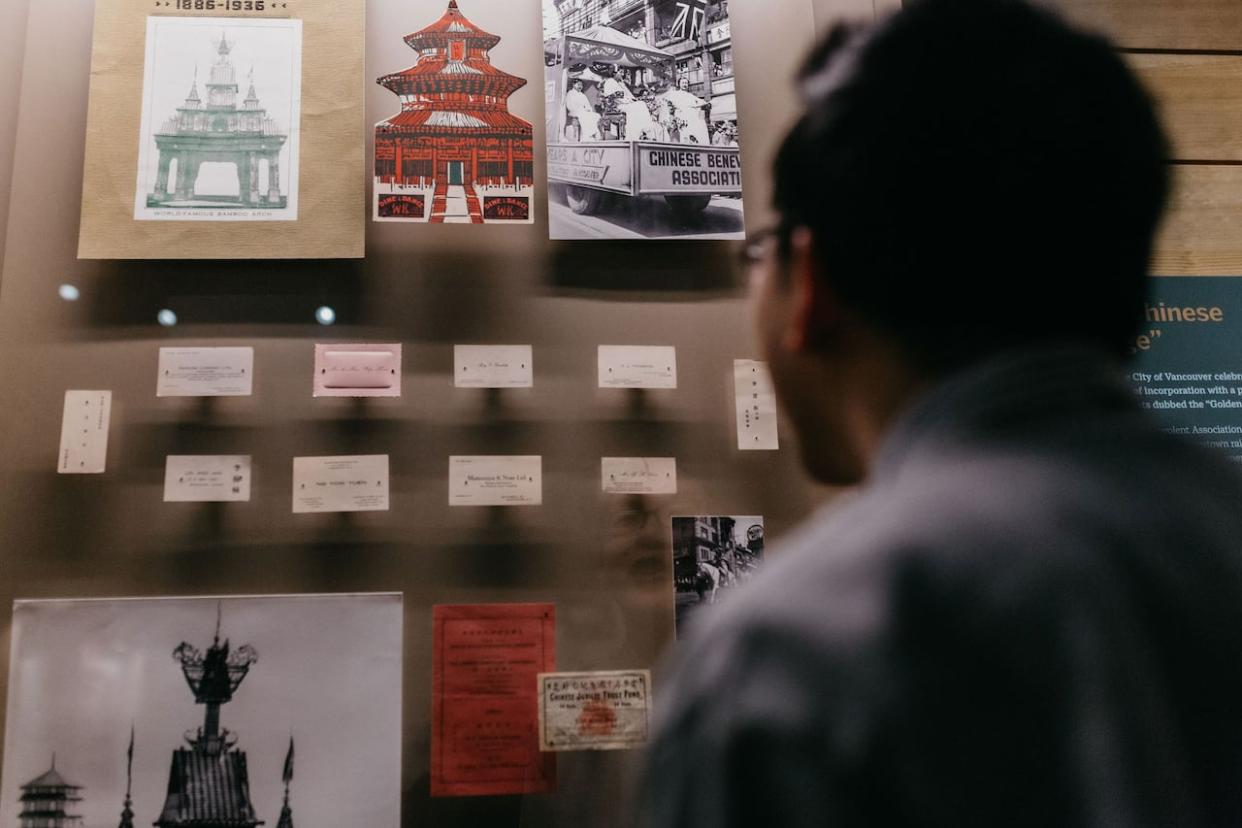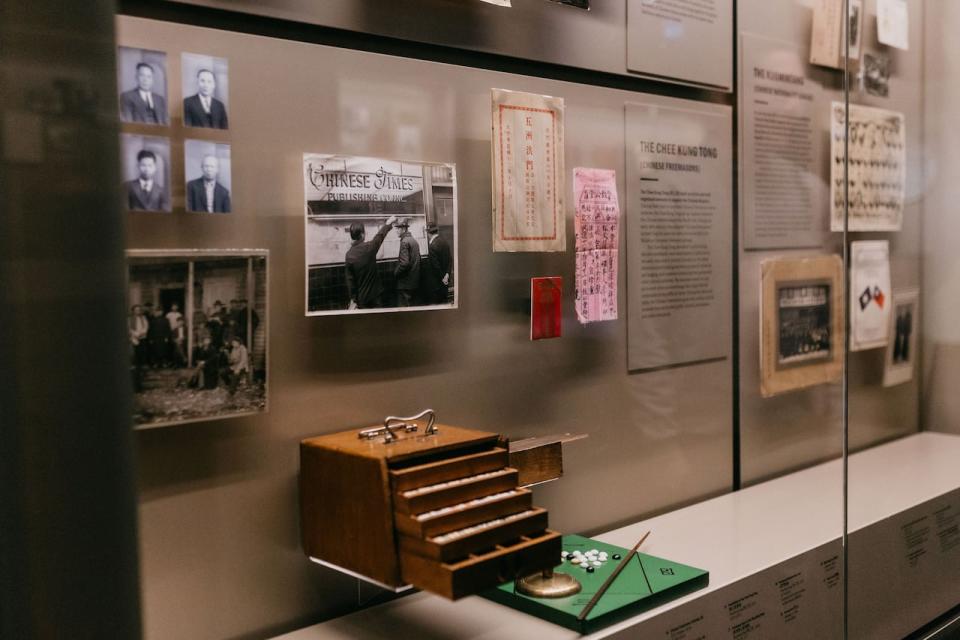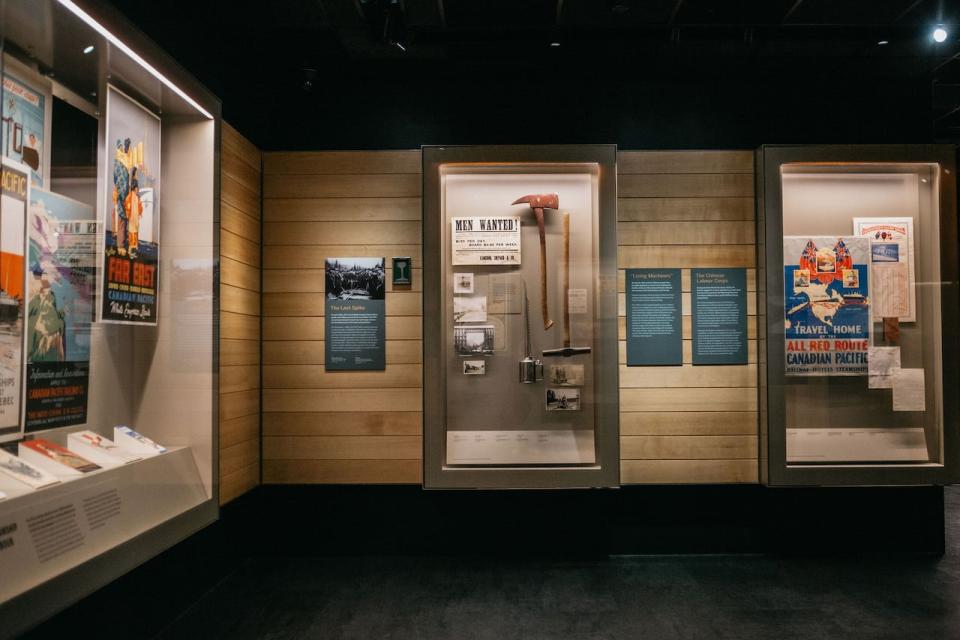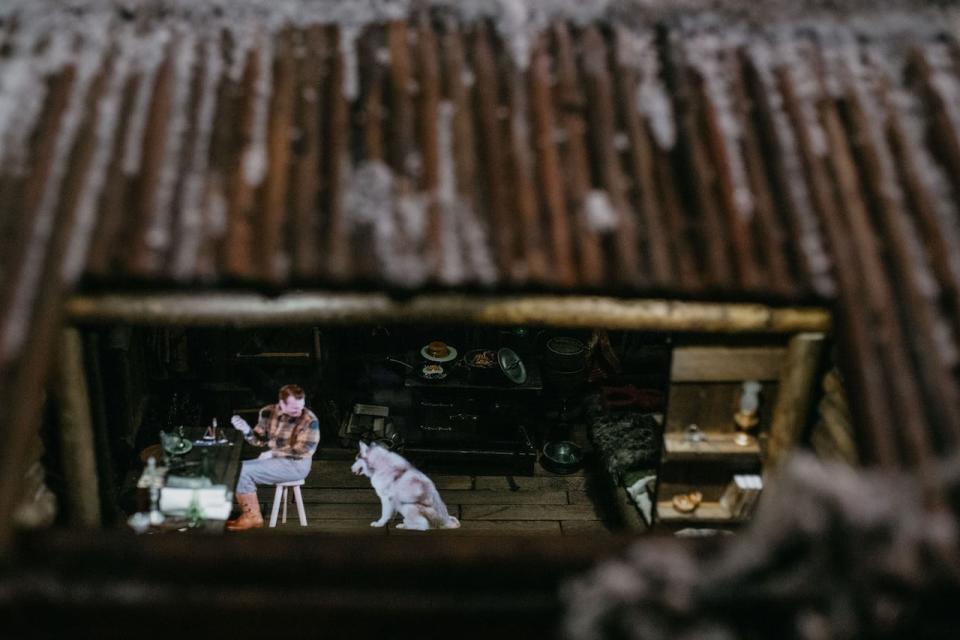UBC gallery offers glimpse of life for early Chinese immigrants

A new gallery at UBC aims to show what everyday life was like in British Columbia for early Chinese immigrants and those seeking their fortune during the gold rush at the turn of the 20th century.
Located on the second floor of the Irving K. Barber Learning Centre in the university's main campus, the Chung Lind Gallery — which opens May 1 — merges the Chung collection, documenting the history of Chinese settlers in B.C., and the Phil Lind Klondike Gold Rush Collection.
The Chung collection alone consists of over 25,000 objects, and was donated to the university by Wallace B. Chung, a former professor of surgery, in 1999.
"[My dad] wants it to be a memorial to those normal, everyday people that history tends to forget," said his daughter Maria Chung.
"It is important for those people to be remembered as well."
The items previously lived in the UBC Library's special collections, but will now have their own permanent space in the new gallery.

The Chung Collection will now be on display permanently in the Chung Lind Gallery, located on the second floor of the Irving K. Barber Learning Centre. (Phoebe Chan)
Chung said her dad was fascinated with the Canadian Pacific Railway steamboats as a child, and started collecting pamphlets and notices from a young age.
He continued collecting his whole life, Chung says, scouring flea markets, poking around in basements of ghost towns, and even dumpster diving.
"We would joke about that, the UBC professor of surgery dumpster diving," said Chung.
She said her father, who is now 98, had a big smile on his face when he saw the new space for his collection.

The Phil Lind Klondike Gold Rush Collection was donated to the university in 2021, along with a $2.5 million donation to have it preserved and made available to the public. (Phoebe Chan)
The gold rush collection consists of over 500 books, hundreds of maps, 1,800 photographs, and other items like journals and letters collected over several decades by the late Phil Lind, a long-term Rogers Communications director and UBC alumnus who donated the items in 2021.
"Now to have a place at UBC for the generation below me, my children, to go and learn about the Klondike in a proper setting is really nice," said Phil's son Jed Lind.
According to the library, Phil Lind's grandfather Johnny Lind was a trailblazer in the B.C. gold rush, operating and co-owning several claims on Klondike rivers and creeks.

A model of a log cabin shows scenes from everyday life during the gold rush as described in Johnny Lind's diary. (Phoebe Chan)
The exhibit includes a model log cabin which displays daily scenes that Johnny described in his diary.
"You can start to imagine their lives at this level that's much more relatable," said Claire Malek, the gallery's archivist.
"When we learn history in school we're often given a broad narrative, and we don't get history at this life-sized level."

 Yahoo News
Yahoo News 
